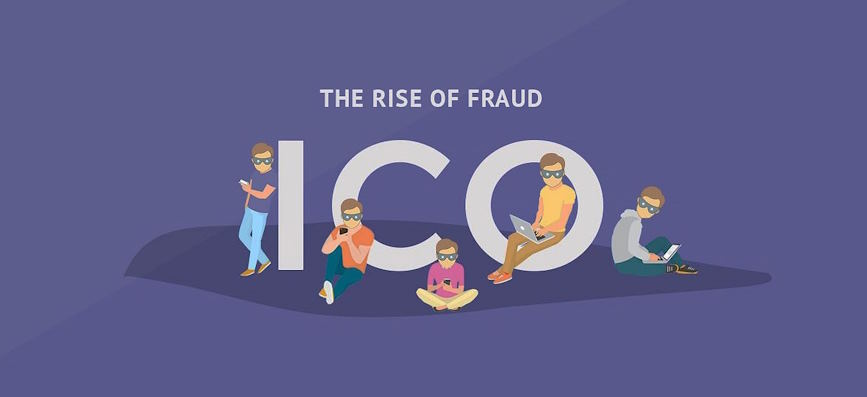In the dynamic landscape of blockchain technology and cryptocurrency, Initial Coin Offerings (ICOs) and token sales have emerged as innovative fundraising mechanisms for blockchain projects. While these fundraising methods offer exciting opportunities for both investors and project developers, the surge in popularity has unfortunately given rise to a concerning trend – the proliferation of fake ICOs and fraudulent token sales. As the decentralized nature of the industry allows for greater autonomy, it also opens the door to bad actors seeking to take advantage of unsuspecting investors.
Characteristics of Fake ICOs: Navigating the Murky Waters
The enticing world of Initial Coin Offerings (ICOs) has proven to be a double-edged sword, offering both incredible opportunities and perilous pitfalls for cryptocurrency investors. Recognizing the telltale signs of fake ICOs is crucial to safeguarding investments and promoting a healthier blockchain ecosystem. Here, we delve into the key characteristics that mark these deceptive schemes.
Lack of Clear Project Details
- Undefined Project Goals and Objectives: Authentic ICOs present a well-defined vision and purpose for their projects. On the contrary, fake ICOs often lack transparency, leaving investors in the dark about the project’s true goals and objectives.
- Absence of a Whitepaper or a Poorly Written One: The whitepaper is the cornerstone of any legitimate ICO, providing in-depth insights into the project’s technology, goals, and implementation plan. Fake ICOs may entirely lack a whitepaper or present poorly articulated, generic documents, demonstrating a lack of commitment to transparency and project fundamentals.
Unrealistic Promises and Guarantees
- Exaggerated Return on Investment (ROI) Claims: Fraudulent ICOs often lure investors with promises of astronomical returns that seem too good to be true. Such exaggerated ROI claims are a clear red flag, as they defy the principles of sound investment and market realities.
- Guarantees of Fixed Profits Without Risk: Legitimate investments inherently carry risks, and any ICO claiming otherwise is likely attempting to deceive investors. Fake ICOs frequently assure fixed profits without acknowledging the inherent volatility and uncertainties within the cryptocurrency market.
Anonymity of the Development Team
- No Verifiable Information About Team Members: Genuine ICOs proudly introduce their skilled and experienced development teams. In contrast, fake ICOs maintain secrecy around team members, providing no verifiable information, leaving investors with no basis to trust the individuals behind the project.
- Limited Online Presence of Team Members: Authentic projects showcase the expertise of their team through robust online profiles and social media presence. Conversely, fake ICOs often have team members with sparse or non-existent online footprints, raising suspicions about the legitimacy of the venture.
Plagiarized or Copied Content
- Stolen Whitepapers and Project Details: A hallmark of fake ICOs is their reliance on stolen intellectual property. These deceitful ventures may present whitepapers and project details plagiarized from legitimate projects, aiming to mislead investors about the uniqueness and viability of their concept.
- Lack of Originality in the Project Concept: Genuine blockchain projects bring innovation to the table, offering unique solutions to real-world problems. Fake ICOs lack originality, recycling concepts and ideas without adding any substantive value to the blockchain space.
Red Flags to Watch Out For: Unmasking the Deceptive Tactics of Fake ICOs
Embarking on the journey of cryptocurrency investment demands a discerning eye and a cautious approach, especially in the realm of Initial Coin Offerings (ICOs). Unscrupulous actors often employ deceptive tactics to manipulate potential investors. Here, we shed light on red flags that should raise alarm bells, helping investors steer clear of fraudulent ICOs.
Pressure Tactics and Urgency
- Urgent Deadlines and Limited Time for Investment: Fake ICOs frequently create a sense of urgency by imposing tight deadlines, pressuring investors to make hasty decisions. Legitimate projects allow investors the time needed to conduct thorough due diligence, whereas fraudulent schemes thrive on impulsive actions.
- High-Pressure Sales Tactics to Force Quick Decisions: Watch out for aggressive sales tactics that push investors into quick decisions. Genuine ICOs value transparency and collaboration, encouraging investors to take the time they need to fully understand the project. Conversely, high-pressure approaches often indicate a hidden agenda.
Lack of Transparency in Fundraising
 Missing or Misleading Information about Fundraising Goals: Authentic ICOs provide clear and accurate details about their fundraising goals, ensuring investors understand the project’s financial needs. Beware of projects that lack clarity or provide misleading information about the amount they intend to raise, as this ambiguity may signal deceit.
Missing or Misleading Information about Fundraising Goals: Authentic ICOs provide clear and accurate details about their fundraising goals, ensuring investors understand the project’s financial needs. Beware of projects that lack clarity or provide misleading information about the amount they intend to raise, as this ambiguity may signal deceit.- Unreliable Use of Funds and Financial Information: Fraudulent ICOs may lack transparency regarding how raised funds will be utilized. Investors should be wary of projects that do not provide a clear breakdown of how funds will be allocated, as this opacity raises concerns about the project’s legitimacy.
Unrealistic Token Distribution
- Overallocation of Tokens to the Development Team: Fake ICOs often allocate an excessive number of tokens to the development team, creating an imbalance that can lead to manipulation and exploitation. Legitimate projects ensure a fair distribution, aligning the interests of the team with the success of the project.
- Lack of Clarity on How Tokens Will Be Distributed: Transparency is paramount in token distribution. If an ICO fails to clearly outline how tokens will be distributed among stakeholders, it raises suspicion about the project’s integrity. Genuine projects provide a detailed tokenomics model, ensuring fairness and trust among investors.











































